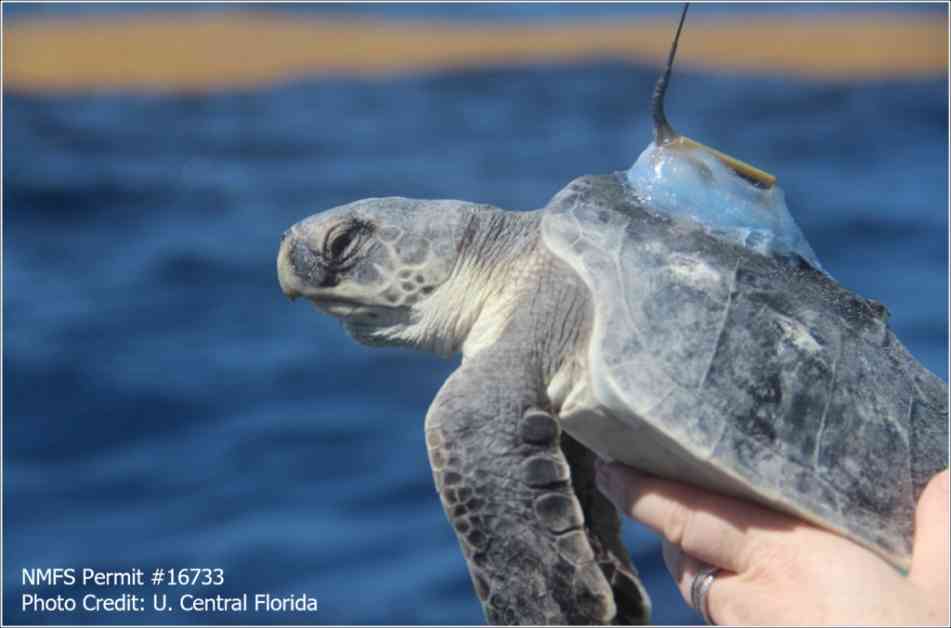The scientific community has long been puzzled by a mystery surrounding sea turtles: where do these creatures go during the transitional phase between hatching and adulthood? The lack of knowledge about this critical period has posed challenges for conservation efforts aimed at protecting these majestic marine animals. However, a breakthrough may have been achieved by researchers from the University of Central Florida and LGL Ecological Research Associates, shedding light on the enigmatic “lost years” of sea turtles.
In a recent publication in Proceedings of the Royal Society B, the findings of a comprehensive study have been unveiled, offering valuable insights into the behavior of sea turtles during their formative years. Nathan Putman, a senior scientist at LGL, discussed the significance of this research in a conversation with Texas Standard, highlighting the innovative techniques used to track the elusive creatures and the implications for conservation initiatives.
Unraveling the Mystery of Sea Turtle Behavior
The primary objective of the research conducted by the collaborative team was to unravel the mysteries surrounding the movements and behaviors of sea turtles during their adolescent years. Putman emphasized that while there is a wealth of information available about sea turtles on nesting beaches, their activities in the open ocean remain largely unknown. By tracking the turtles’ movements and distributions in the Gulf of Mexico, the researchers aimed to fill this crucial gap in knowledge.
One of the main challenges in studying sea turtles during their adolescence is their small size and rapid growth rate. Traditional satellite tracking devices are too large for these juvenile turtles, and their growth causes the devices to detach quickly. To overcome these obstacles, the researchers collaborated with satellite miniaturization companies to develop small telemetry devices that could be securely affixed to the turtles’ shells using a unique toupee gel adhesive.
Revealing the Secrets of Sea Turtle Navigation
The data collected from the tracking devices provided unprecedented insights into the behavior of adolescent sea turtles. Contrary to previous assumptions that these turtles were passively dispersed by ocean currents, the researchers discovered that the turtles exhibited a remarkable degree of control over their movements. By targeting areas in the northern Gulf of Mexico with favorable food sources, optimal growing conditions, and reduced predator encounters, the turtles demonstrated a sophisticated navigation strategy.
The implications of this research extend beyond scientific curiosity, offering practical applications for conservation efforts along the Texas Gulf Coast and beyond. By developing predictive models based on the turtles’ behavior, researchers aim to assess the risks posed by human activities such as fishing and energy development and guide sustainable practices that promote coexistence between marine life and human endeavors.
In conclusion, the groundbreaking research conducted by the University of Central Florida and LGL Ecological Research Associates has provided a new perspective on the elusive “lost years” of sea turtles. Through innovative tracking methods and meticulous data analysis, scientists have unlocked valuable insights into the behavior and navigation abilities of these enigmatic creatures, paving the way for informed conservation strategies that can safeguard the future of sea turtles and their habitats. If you found the reporting above valuable, please consider making a donation to support it here. Your gift helps pay for everything you find on texasstandard.org and KUT.org. Thanks for donating today.















